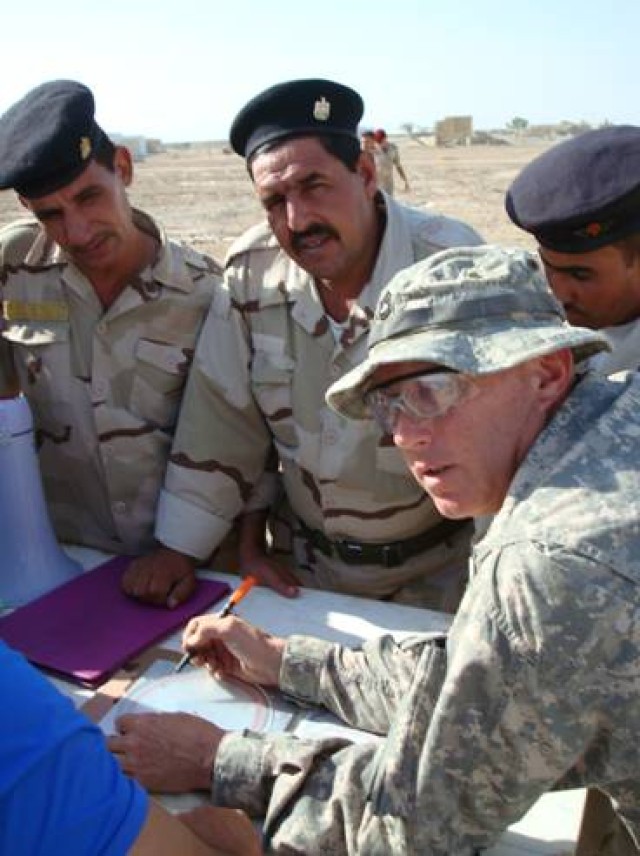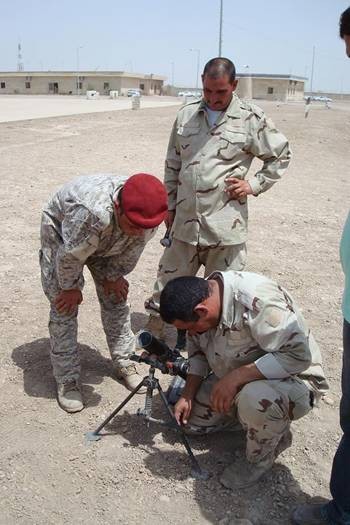As the U.S. military prepares to leave all of Iraq's security in the hands of Iraqi forces, the training the two forces have conducted has created a military capable of defending Iraq's sovereignty from any threat.
Mortar soldiers don't factor into normal security and stability operations, but they are a key element for a military capable of guaranteeing its nation's borders.
Beginning in July 2009, the Mortar Platoon, 4th Battalion, 6th Infantry Regiment, and Capt. Michael Bradbury, the battalion's fire support officer, began talking with the leadership of the Mortar Battery of the Iraqi Army's 38th Brigade. Once a solid foundation was established, U.S. and Iraqi leaders began planning training for the Iraqi mortar soldiers in Maysan Province.
In August, "Thunder Platoon" hosted a six-day Fire Direction Center class at Contingency Operating Site Garryowen.
The intent of the class was to "train the trainer" - teaching skills in a way that helps students pass them on to others - and create a foundation for further joint training between the 4th Bn. and the 38th IA Bde.
The course covered the fundamentals of the indirect fire team, and culminated with a live-fire exercise that allowed Iraqi officers to use their newly acquired skills, directing their men in Arabic, independent of American guidance.
"We train the Iraqis to the same high standards required of U.S. Army mortarmen," said Staff Sgt. Gerardo Gutierrez, from Laredo, Texas, primary instructor for the mortar course. "I've seen them significantly improve their proficiency over the past few months."
Thunder Platoon also executed a nine-day familiarization course on the Serbian 81mm mortar system for 20 Iraqi soldiers. Five soldiers from each battalion of the 38th IA Bde. were selected for the training.
The primary instructor, Sgt. Christopher Leavitt, had to learn about the Serbian systems in order to prepare for the differences in the U.S. and Iraqi equipment. The course focused on the characteristics and capabilities of the equipment, safety checks and duties and responsibilities of the mortar squad members.
"To start with such a basic understanding, I was impressed on how quickly the Iraqi Soldiers were able to grasp the skills taught during the course," said Leavitt, from Bangor, Maine.
As 4th Bn, 6th Inf. Regt., nears its re-deployment, the mortar platoon can look back and see that it has made a positive impact in the abilities of fellow Iraqi Army mortar soldiers.
They have developed relationships in spite of language and cultural barriers, which were overcome through the shared goal of a stronger and democratic Iraq.
"The 38th IA [Brigade's] Mortar Battery has and continues to strive for excellence in mortar gunnery skills and tasks," said Sgt. 1st Class Mark Lykins, the mortar platoon sergeant, from Indianapolis, Ind. "This will provide the citizens of Iraq and the Maysan Province the security and stabilization to prosper."




Social Sharing